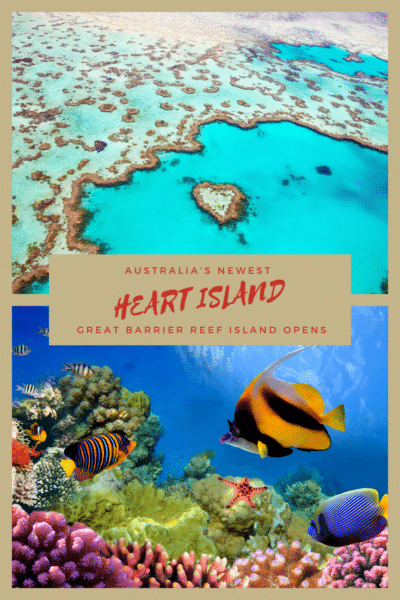
The Great Barrier Reef.
Three words that are instantly recognizable around the world, and a sophisticated natural ecosystem that can be seen from outer space.
Of course, unless you spent the last couple of decades living under a rock, reading the previous sentence will immediately have you worrying about higher sea temperatures and mass reef devastation. Your brain might even deliver a shocking image of bleached coral to up the anxiety ante at this point.
Conservation is practically our middle name, and with decades of experience on the ground, we have learned to do the research and get our facts straight. As you will know, we also like to visit a destination first hand to confirm or deny reports.
This is what we know about the Great Barrier Reef:
Fast Reef Facts
- This coral reef ecosystem extends over 14 degrees of latitude from shallow estuarine areas to oceanic waters that can be over 6500 feet deep and contains 10% of the entire world’s coral reefs.
- It is the sea country home of more than 70 Traditional Australian Owner groups who have lived in this marine environment for more than 60,000 years.
- Millions of visitors continue to flock to the Marine Park and World Heritage Area, which was officially created in 1975 for the Reef, every year.
- This means the Great Barrier Reef contributes over $ 5.6 billion a year to the Australian economy, and around 70,000 people work on and around the reef.
- The Great Barrier Reef has 3000 coral reefs (including 600 types of soft and hard corals), 600 continental islands, 300 coral cays, and around 150 mangrove islands. It runs from the northern tip of Queensland to Bundaberg and is between 37 and 155 miles (60 km and 250 km) wide – in fact, it would take up half of Texas.
- Turtles and crocodiles have lived here since prehistoric times and have changed very little over the millennia.
- The Great Barrier Reef also has more than 100 species of jellyfish, 3000 varieties of mollusks, 500 species of worms, 1625 types of fish, 133 varieties of sharks and rays, and more than 30 species of whales and dolphins.
- BUT – the coral reefs that made the Great Barrier reef famous comprise only 7% of the entire Marine Park and World Heritage Area. You can also explore seagrass, mangroves, sand, algal and sponge gardens, inter-reefal communities, and deep oceanic areas.
- There are different protection zones throughout the Great Barrier Reef, and a variety of activities are allowed in each zone.
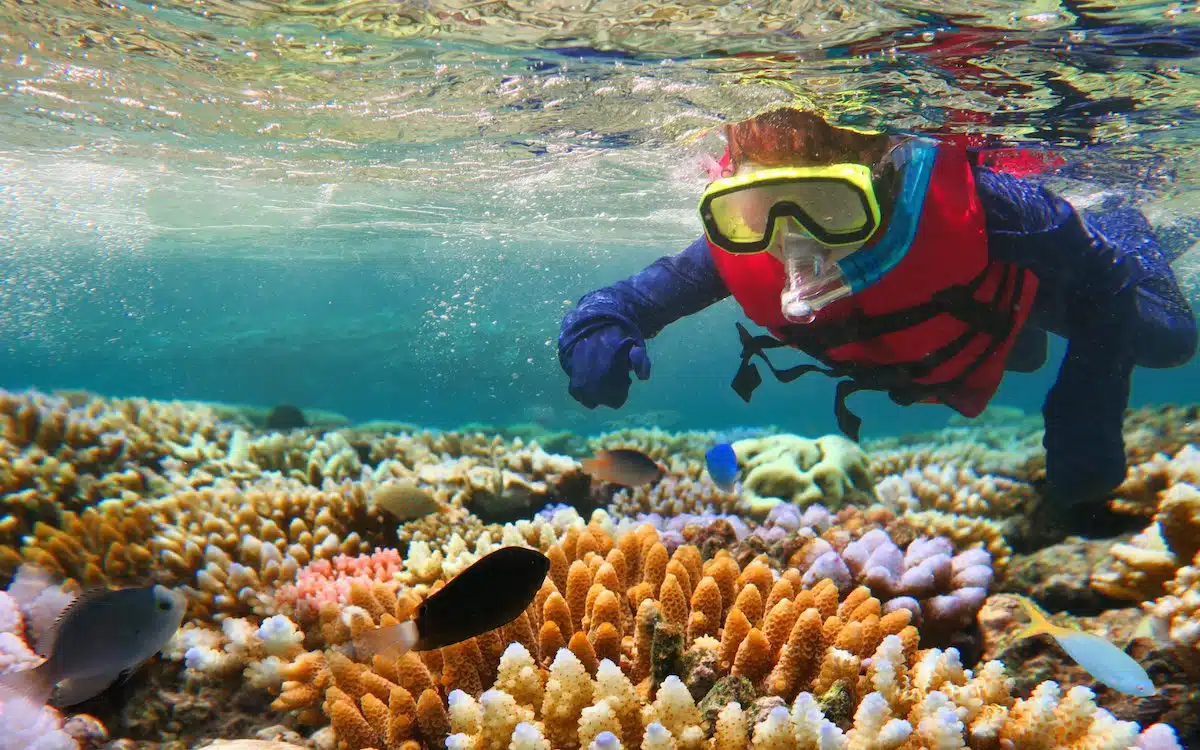 © Rafael Ben-Ari – stock.adobe.com
© Rafael Ben-Ari – stock.adobe.com
The State of Our Coral
Like global coral reefs, the Reef is under pressure from climate change and other threats.
Without effective and wide-ranging mitigation, the survival of coral reefs remains in the balance on a global scale as climate change impact is only predicted to grow more severe and critical.
During 2016 and 2017, the reefs were affected by coral bleaching.
Australia has ratified the Paris Agreement to reduce greenhouse gas emissions and limit global warming to reduce the risks to coral reefs.
You can keep an eye on the Reef health in 2019 http://www.gbrmpa.gov.au/the-reef/reef-healthhere. Updates are most regular over summer when the highly sensitive coral can be affected by the smallest variations in temperature.
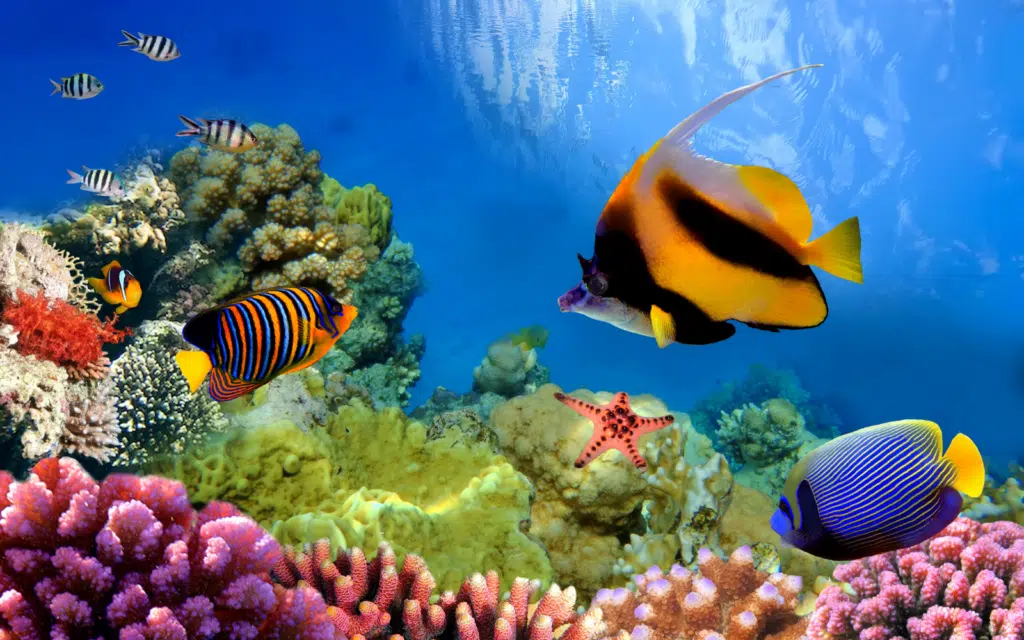 © vlad61_61 – stock.adobe.com
© vlad61_61 – stock.adobe.com
Why Coral is So Important
Coral reefs are magical places – but we don’t only care about the survival of the Great Barrier Reef because we want pretty places to go on holiday.
Some of our favorite reasons to love coral are:
- They provide habitat and shelter for many marine organisms and help with nutrient recycling.
- Corals provide a clear, scientifically-testable record of climate change.
- They provide us with many life-saving medicines.
When Leora recently visited the Great Barrier Reef, she was so impressed by the incredible snorkeling opportunities that can still be found on the reef. If you know where and how to go, you can definitely live the Coral Dream here – and now we have an exciting new destination and property to add to your bucket list.
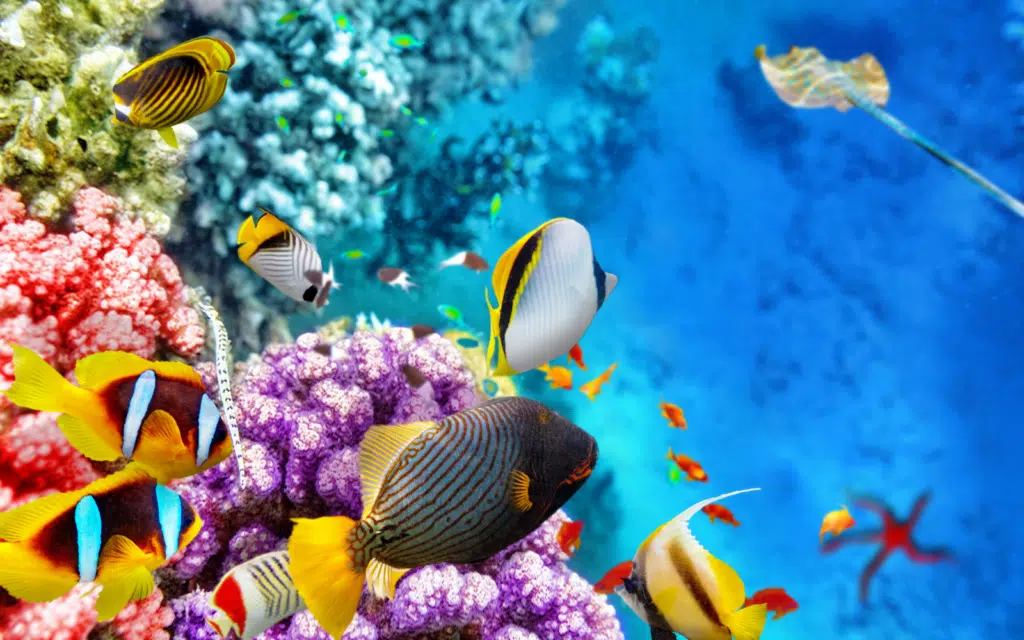 © BRIAN_KINNEY– stock.adobe.com
© BRIAN_KINNEY– stock.adobe.com
The Heart of the Great Barrier Reef…
and the Whitsunday’s Poster Child
Forty-five years ago, a distinctly beautiful island was discovered by an Air Whitsunday pilot among Hardy Reef’s corals, caves, and canals in the Great Barrier Reef.
Travel an hour from Hamilton Island over endless blue from Whitehaven Beach over Hill Inlet and the Coral Sea to a heart-shaped island that is only 55 feet (17 meters) in diameter. Before now, Heart Island was a location the lucky few could spy from the sky… and the rest of humanity might see in pictures that frankly looked completely photoshopped (it is one of the most photographed spots of Great Barrier Reef coral).
Following almost a decade of applications, environmental impact studies, approvals, and constructions, a moored pontoon island has now emerged a short swim from Heart reef.
No-one has ever been this close to the reef, and visitors are some of the first humans to ever snorkel with the fish, turtles, and sharks who live here.
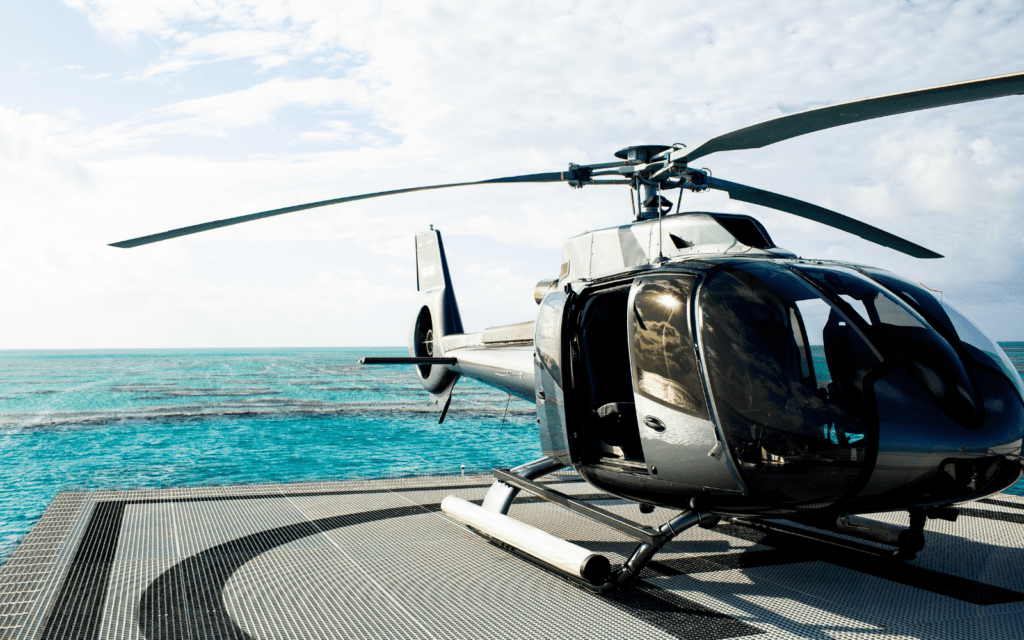 © HEART ISLAND – Kara Rosenlund
© HEART ISLAND – Kara Rosenlund
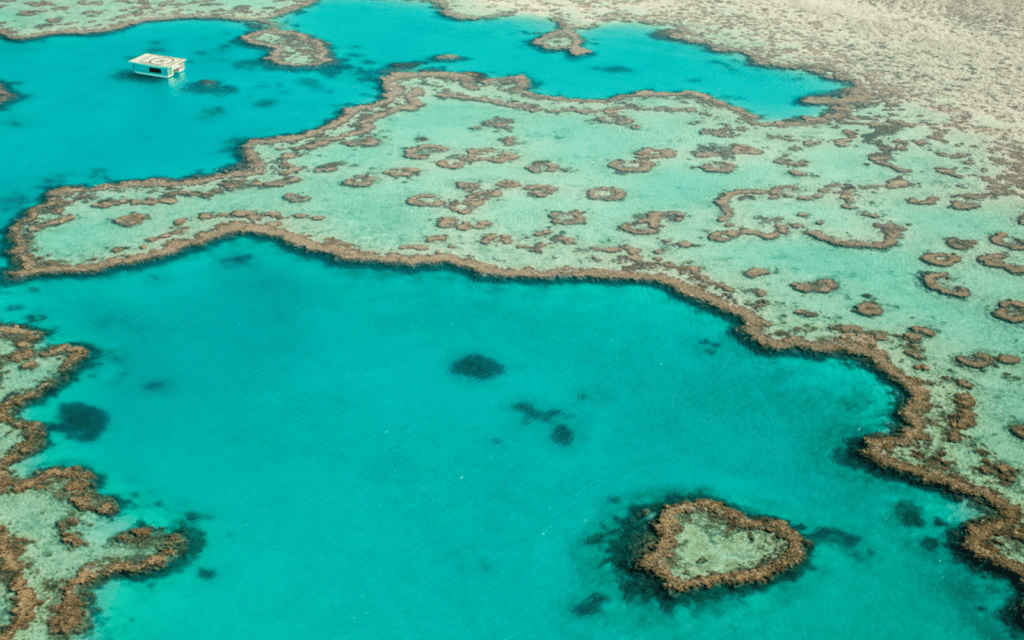
© HEART ISLAND – Kara Rosenlund
Very Bond, James Bond Darling
Only six guests can visit the pontoon for a 90-minute experience, including free-flowing champagne with a spot of lunch before hopping onto a glass-bottom boat that is lowered into the water when guests want to explore the reef.
In its carefully designated lagoon, the pontoon is a paragon of ecologically sustainable virtue, moored in the sand, powered by wind and solar power, and it carries zero waste. Of course, it manages to be marvelously eco-conscious AND incredibly stylish with a mirrored exterior, luxury fittings, a shallow undercover pool, and views that are to die for!
Before Heart Island, the famous Great Barrier Reef snorkeling could not legally happen around Heart Reef.
This is, without a doubt, the ultimate Great Barrier Reef tour. Instagram Ahoy!
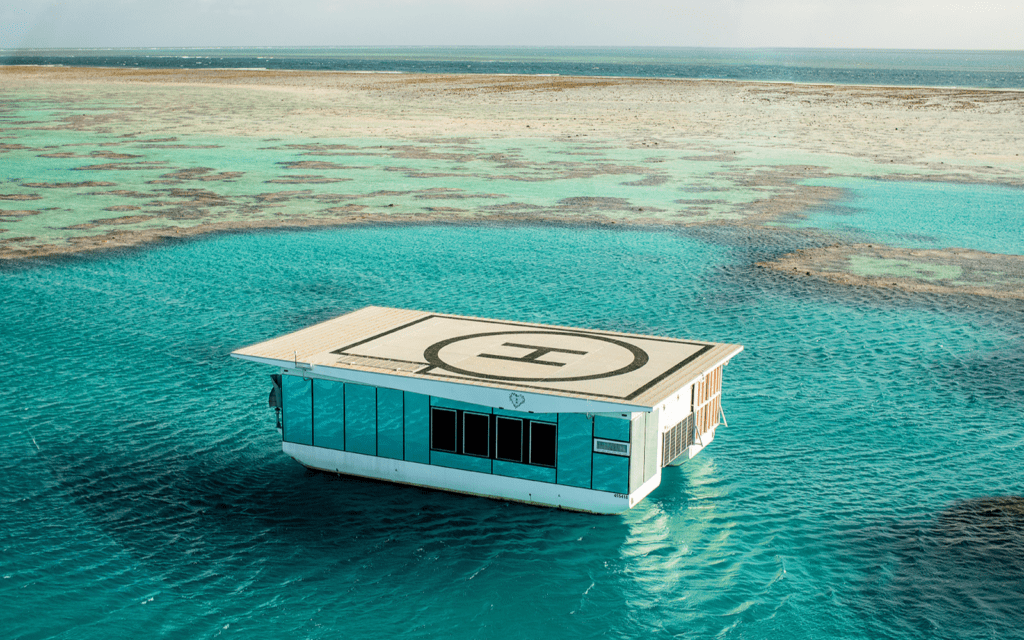 © HEART ISLAND – Kara Rosenlund
© HEART ISLAND – Kara Rosenlund
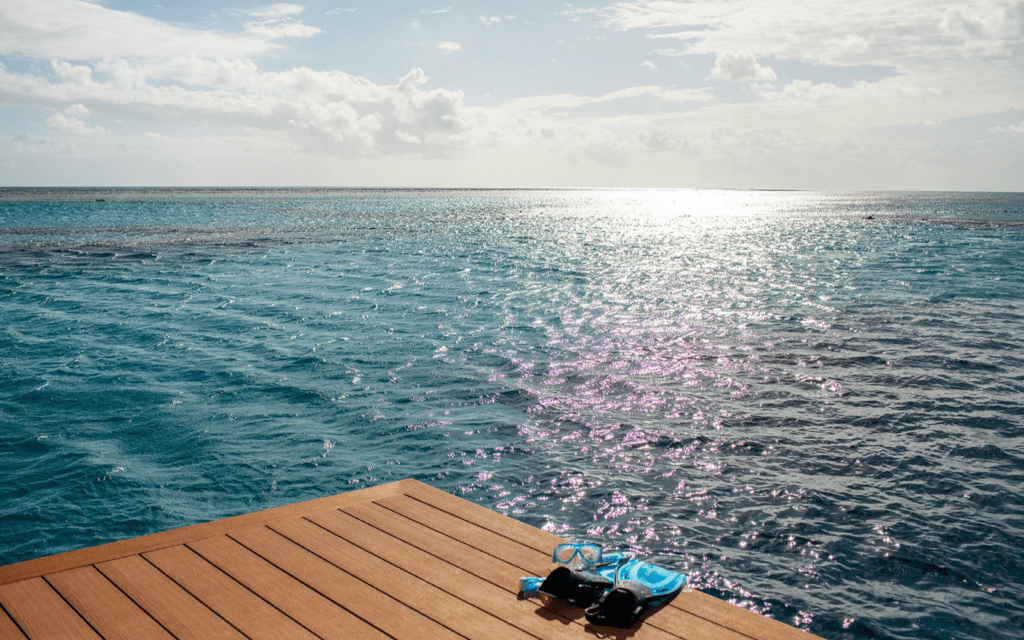 © HEART ISLAND – Kara Rosenlund
© HEART ISLAND – Kara Rosenlund
About the Journey to the Heart Tour
Departure times vary
Guests must be over 14 years of age
The entire experience takes three hours (including 90 minutes on Heart Island Pontoon)
A Glass bottom boat tour of Heart Reef Lagoon, light catering and beverages, and all snorkeling equipment is included.
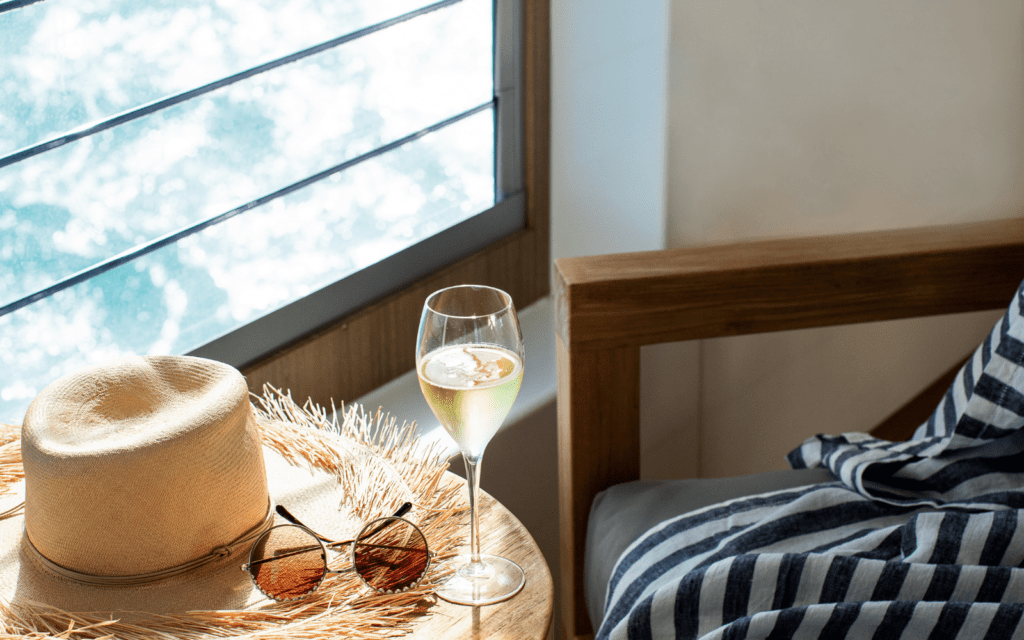 © HEART ISLAND – Kara Rosenlund
© HEART ISLAND – Kara Rosenlund
Do bring:
A Hat
A Towel
Sunscreen
Your Camera
Swimwear
Flat soled shoes (no high heels allowed)
A light jacket



